Introduction
The conceptual unit explored the core question of “How can I use unconventional forms to express myself?“. Following this, we were challenged to explore creative risk-taking through poetry, animation, art, music, and web production, expressed in our own personal ways. This was achieved through experimenting with, learning, and using professional equipment and programs such as DSLR cameras, Tascam audio recorders, Adobe Premiere Pro, Adobe Photoshop, Adobe Animate, Adobe Dreamweaver, Pro Tools, and WordPress.
Personally, I’ve appreciated the array of skills that Digital Media has taught me, within just the first few months, and am looking forward to be able to learn more and develop more useful skills. English has pushed me to expand my creative limits, and I’ve been able to accomplish things I’ve previously lacked the motivation to do. I’m excited to see how this will help build my creativity in the future.
Photo Haiku & Video
For our photo haikus in English, we were each given an individual prompt, exploring the feeling of something through the action or experience of something else. We made a haiku based on this, and paired with an original photo, adjusting the font, color, and text placement in a way we and our peers thought best fit the image and theme. After this, for Digital Media, we recorded our haikus and in Premiere Pro put the recording, photo, text, and music of our choice together to make a short video, demonstrating our haiku and video editing skills. My prompt was to explore the feeling of euphoria through advertising.
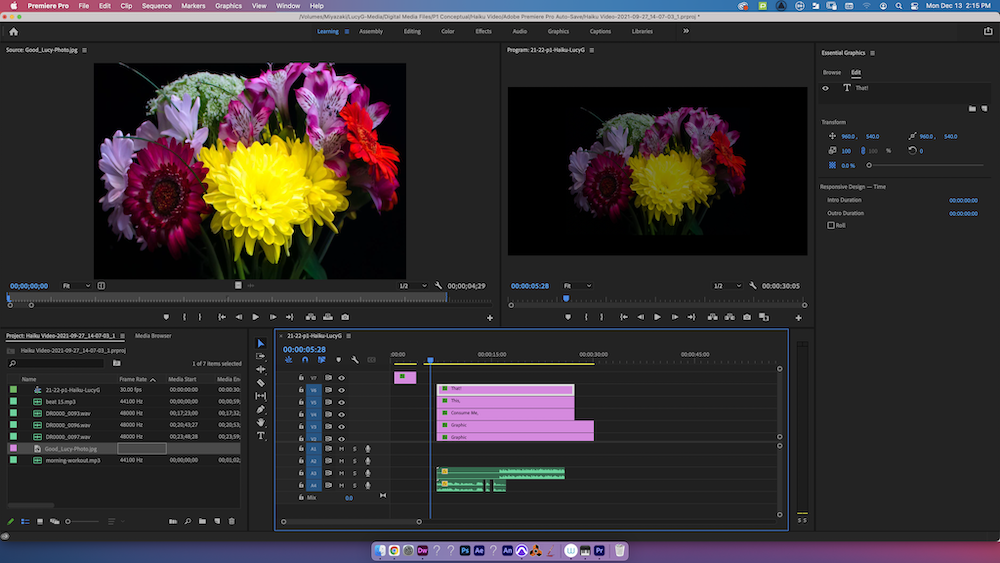
What I valued about the Haiku Video production was both how it allowed a more thorough experience with the program, helping to lean it better, and how it helped push me to show off my work more. That’s something I’ve always been somewhat anxious about, so this was helpful.
Poetry
In our poetry unit in English, after making our haikus, we focused on free verse poetry, reviewing different poets, poems, and techniques. The final assignment of the unit was to create a free verse poem, either original or using an earlier rough draft. I chose to write my free verse poem based on an earlier assignment, a poem inspired by Walt Whitman’s “One’s-Self I Sing”. After finishing our poems, we recorded them for Digital Media, and then paired the text with a fitting photo we had taken in an appealing and legible manner. After this, we edited the audio using Pro Tools, adding music and sound effects, and combined the poem photo and audio.
“Decay” is a free verse poem, adapted from my response to the One’s-Self, En-Masse assignment, about solitude, solidarity, and the theme of cycles; overall, exploring themes of nature, parts of a whole, duality, and life from death. These themes were especially affected by peer feedback, since the workshop readers seemed especially drawn to them. The last reason is why I chose the title “decay”—though on the surface it seems closely related to death, decay occurs as a result not only of death but of other organisms’ drive to live. The speaker in this poem is somewhat unclear, but literally is a leaf on a branch. With the messages of the poem, I imagine the speaker to not solely be a leaf, but an immortal presence directly experiencing the cycle of life and death, only momentarily experiencing the world as a leaf. In the first stanza, I compared the existence of a single leaf among many to a single feather among many. The original poem seemed to mostly be based mostly on winter and autumn, while in the final poem I was also exploring themes of cycles in nature—because of this, I included the words “bright” and “warm”, to make the season seem less set. Rather than calling the berries red, I chose “sanguine”. This is based on its Latin roots, sanguis meaning blood, since I try to mention or relate to blood in various instances throughout the poem. This is because of its simultaneous relation to life, being a main source of life and being pumped from the heart, which has traditionally been seen as the most vital organ to life, and its relation to death, usually being seen when something is injured. I also used contrasting words of “accompanied” and “solitary”, exploring themes more related to the original poem, which can be seen in the next stanza. My usage of “we, alone” is meant to further push this idea of loneliness and togetherness. The alliteration and onomatopoeia in “flutter-fly” and “flip-fold” is meant to give a strong sense of motion. The duality of being part of a whole is again seen in the third stanza, with the usage of “I, we”, and further comparisons to other parts of nature (“Rise up as a bird’s downy feathers”) are made to further connect to themes of nature and togetherness. In the fourth stanza, the use of “alive with decay” is used to demonstrate the theme of juxtaposition and life through death, as well as the use of “bloodred” relating back to my point about blood in the poem. In this stanza, I made it most similar to autumn, due to its nature as a transitional stage between summer’s “life” and winter’s “death. The poem’s tone then shifts to be more powerful, almost proud, as the bough is blown, and begins to “sing”. Again, I used more contrasting language to further emphasize the poem’s main themes, and then go into describing other seasons of the year to further show the concept of cycles. After the line describing the change to fall and winter, I utilize the motif of the phoenix, further showing life from death, and describe the berries in the next line as “bloody”, not only because of my earlier point about blood but also to show how this life has come from death, suggesting the berries are coated in the blood of the death they grew from. I ended the poem describing the branches of the tree (the witch’s fingers) as a mother, to create an association with Mother Nature.
The main things I valued in this were how it was able to help me expand my awareness of poetic devices and how I was able to push myself, as I often struggle with creative writing, including poetry. It was also helpful in audio editing to learn more about Pro Tools and how different music and sound effects could effect the impression on the listener.

Photoshop Blend Mode Editing
In order to become familiarized with Photoshop for Digital Media, we had to take multiple images of ours and apply different blend modes to them to improve them. These were screen, multiply, and overlay using brush strokes. Besides these, we also utilized blend modes to combine two photos. When we were done with this, we put the edited and unedited images together and added text explaining what we did.
What I valued in this assignment was how it showed me different ways to edit photos, considering before this I used Lightroom.

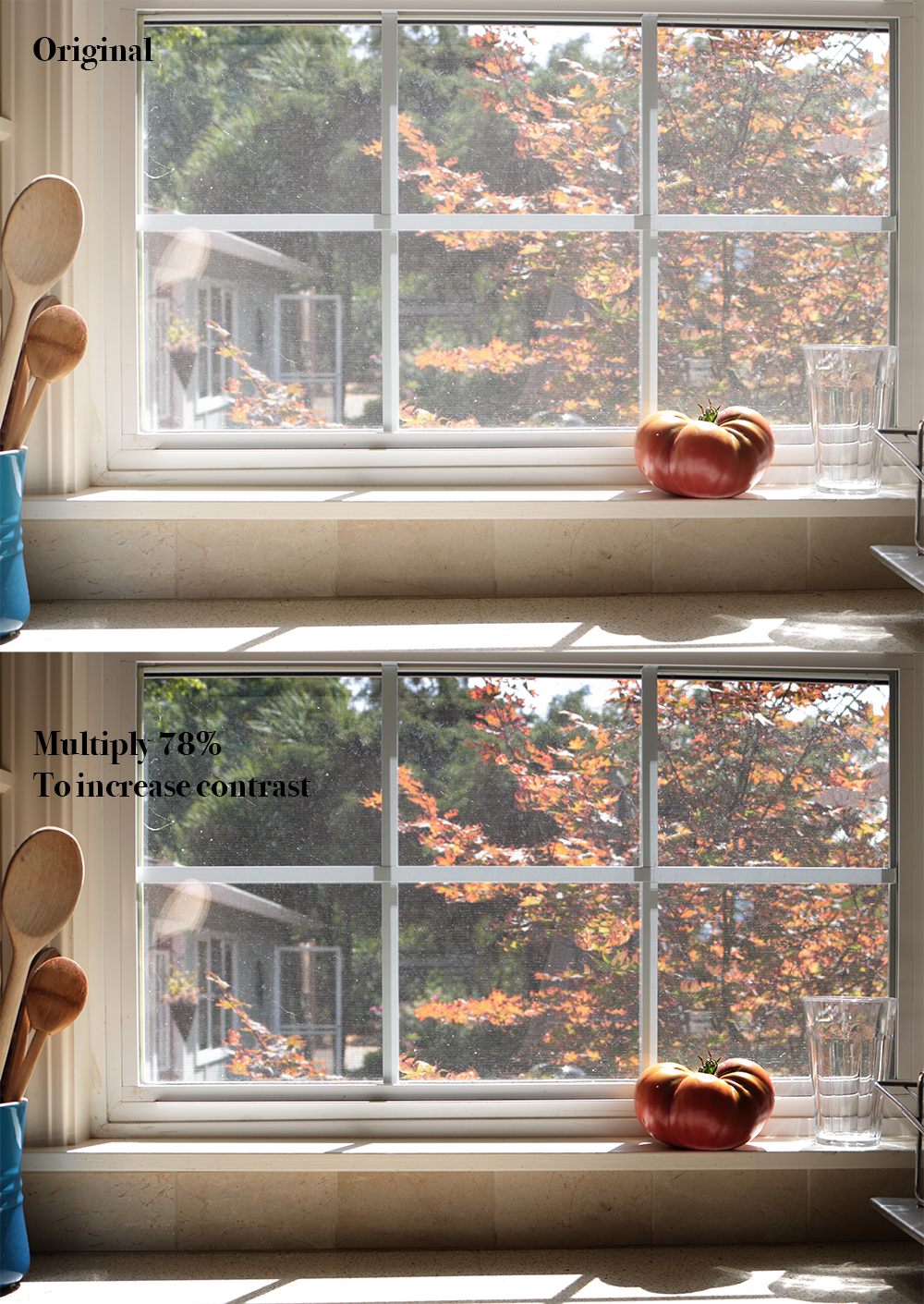
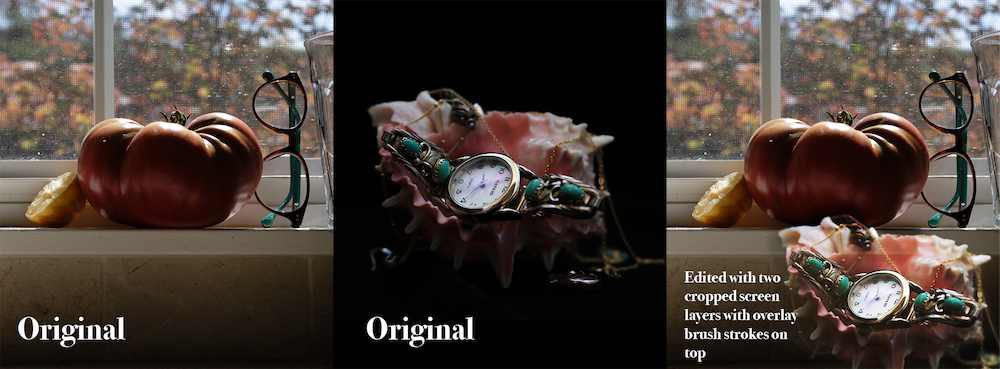
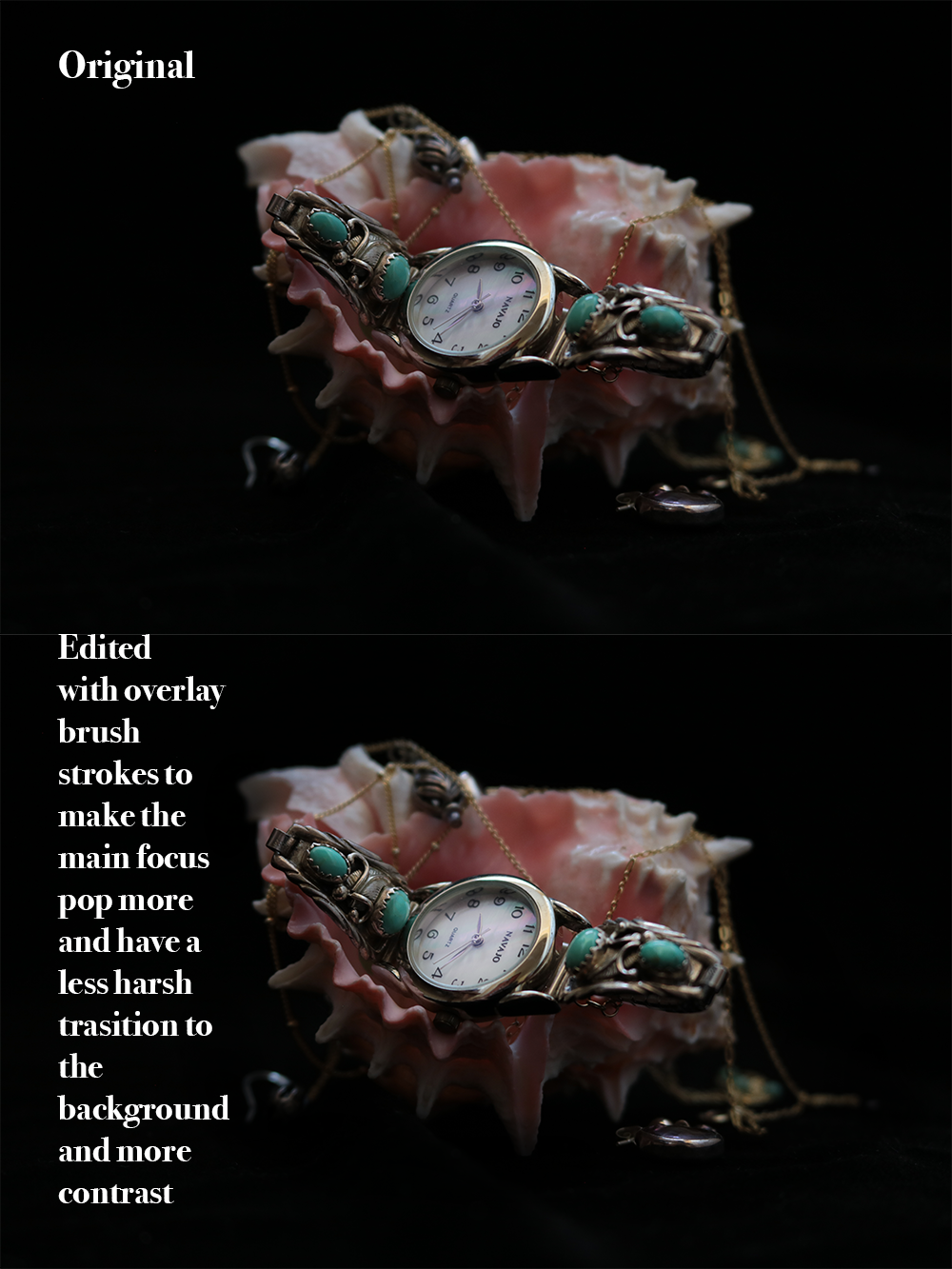
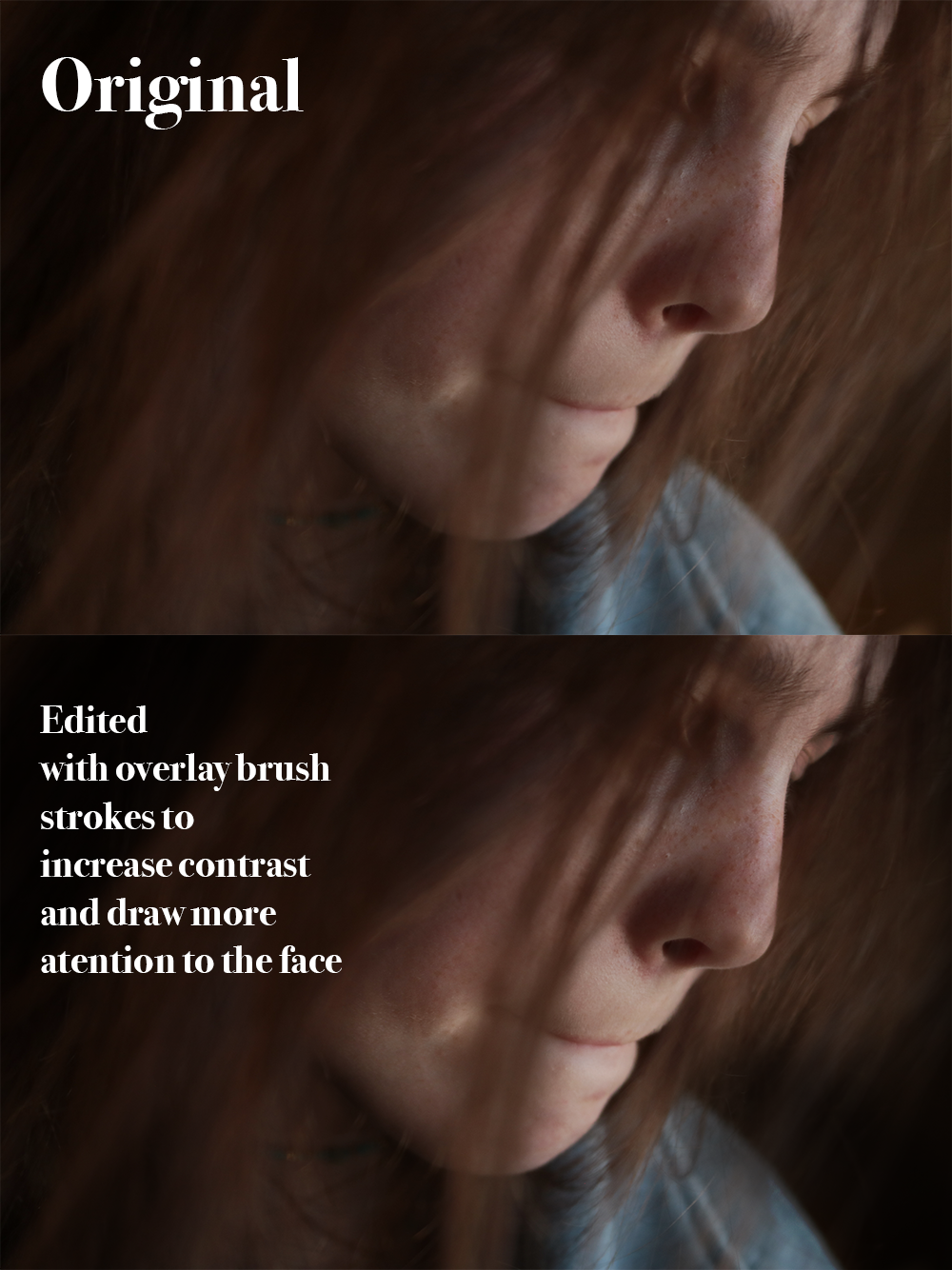

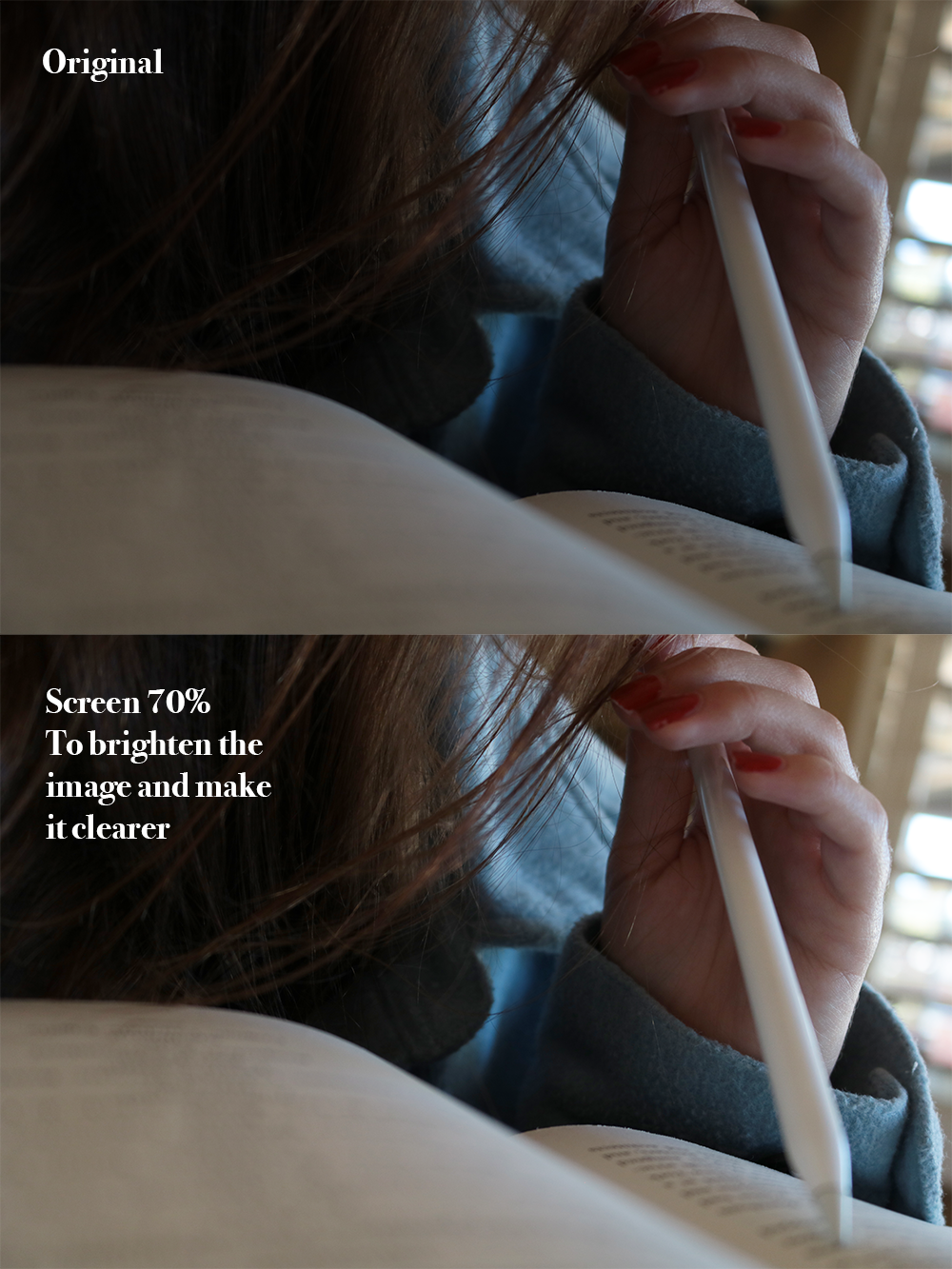
Animation
Animation has always been something I’m interested in, as a way to utilize my interest for both storytelling and art, and the class has allowed to start on my journey to do so.
In animation so far, we’ve mainly focused on learning the principles of animation and creating introductory and experimental projects, and have created 2D animations traditionally and digitally, using multiple different mediums.
Zoetrope Animation
The zoetrope animation was our first animation of the year. Zoetropes are an early form of creating animations, which work by spinning a strip of paper containing a sequence of frames, which can be viewed with a mirror on the inside of the zoetrope. In our case, the strip of paper was split into 16 frames, which we could make any animation on. I chose to illustrate a plant growing.
Phenakistoscope Animation

Phenakistoscopes are another type of early animation, in which frames are partially cut out in a circular piece of paper, meant to simulate movement when spun. For this assignment, I wanted to do something more creative which expressed my own creative style more—previously, for the zoetrope, I was more so testing out animation. I wanted to create something more eerie, and was interested in making something spinning over the character’s face and changing it momentarily, before changing back. We animated the phenakistoscope in Photoshop.
Flipbook Animation
A flipbook is a usually small sequence of papers, each containing a single frame, that, when flipped through, show the animation. For our first flipbook animation, we were required to draw at least 90 frames, including some color. During this assignment, we were also introduced to light boards, which allowed us to trace over previous frames in order to keep them consistent.
Exquisite Corpse Flipbook Animation
This assignment involved the entire class, with one person’s flipbook connecting to the next. We each chose a shape for the starting and ending frames of our animation, which would then connect to the next flipbook; e.g., if the last shape of one flipbook was a circle, the first shape of the next flipbook would be a circle in the same area of the page. Between these starting an ending frames (60 total frames), we could animate anything we wanted that would lead into both of the shapes. After the previous flipbook, I wanted to create something that would take less time, since the previous one was very time-consuming.
Stop Motion Paper Cutout Animation
For the paper cutout animation, we cut out individual pieces of paper and put them together to create a stop motion animation, taking photos with Dragonframe as we moved different parts of the piece.
Stop Motion Object Animation
The stop motion object animation was similar to the paper cutout animation—they were both stop motion, and we used Dragonframe, which allowed to further get used to it. We could choose to make the object animation with anything, either from home or from the classroom, so I chose some dolls, some of which I had laying around and some of which I had made with my mom years ago.
